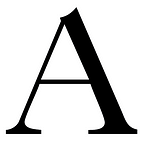Glass Bender
Turning glass into tools on campus.
Photographs by Matt Wright-Steel | By Danielle Lopez
Adam Kennedy is part of a rare breed. Working out of his glass shop in Robert A. Welch Hall, Kennedy is one of a few in-house university glassblowers left in the country. While there are others like him at Texas universities such as Texas A&M, Texas Tech, and the University of Houston, and nationally at Princeton and Yale, Kennedy is UT Austin’s only scientific glassblower.
Since 2010, Kennedy has been shaping glass into customized pieces for colleges across the university. From creating vials to hold uranium to helping construct a device that mimics the way butterflies chew, it is up to Kennedy to meet with researchers from the Departments of Chemistry, Chemical Engineering, Geology, and others to take what they imagine and turn it into reality. “The advantage of having me here is custom glass work,” he says. “There are places you can order parts but here we can make whatever you need.”
Originally, Kennedy thought he wanted to work in a library. But in 2006, he took an art glass class that made him eager to learn more. He attended Salem Community College in New Jersey, which has the only scientific glassblowing program in the country. He rarely finds himself dabbling in artistic glassblowing these days, but on occasion inspiration strikes. What he enjoys most about glass work, he says, is problem solving. “It’s a love-hate thing,” he says. “Some of the projects really make me think and sometimes they really frustrate me. Things don’t always go as planned but I like knowing my next ten steps and determining what’s possible.”
